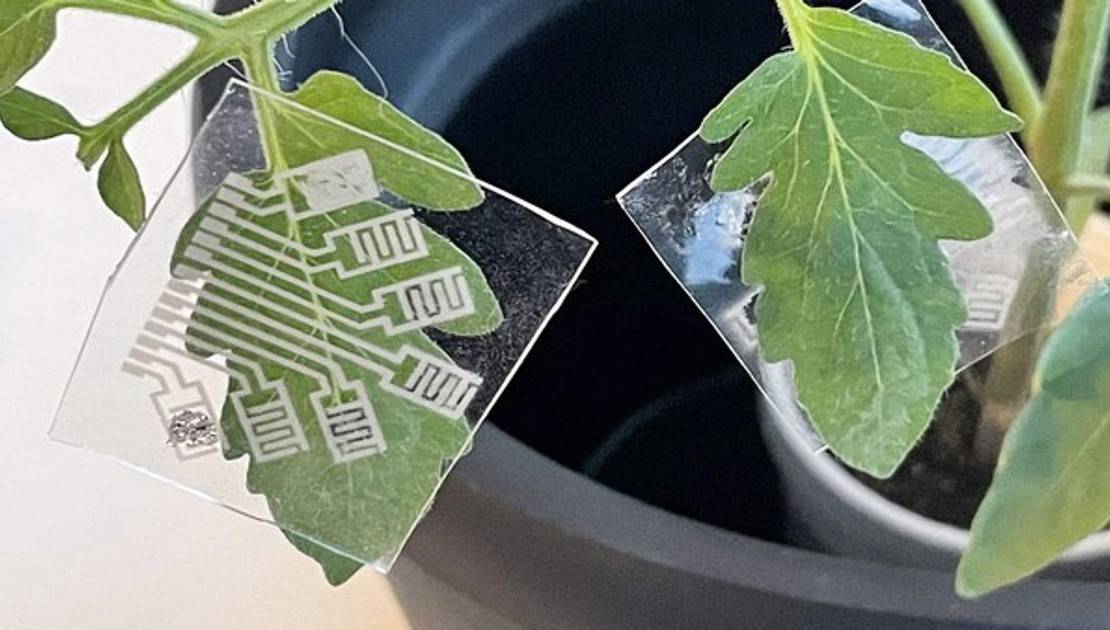
During testing, the researchers discovered that the patch could identify a viral infection in tomatoes more than a week before producers could detect any visual indicators of sickness.
"This is important because the earlier growers can identify plant diseases or fungal infections, the better able they will be to limit the spread of the disease and preserve their crop," says Qingshan Wei, an assistant professor of chemical and biomolecular engineering at NC State and corresponding author of a paper on the work.
"Additionally, the faster growers can identify abiotic stresses, such as contaminated irrigation water from saltwater intrusion, the better able they will be to address relevant challenges and improve crop yield." The article, titled "Abaxial leaf surface-mounted multimodal wearable sensor for continuous plant physiology monitoring," was published in the open-access journal Science Advances on April 12.
The method is based on an earlier prototype patch that detected plant sickness by detecting volatile organic compounds (VOCs) released by plants. Under different conditions, plants emit diverse mixtures of VOCs. The sensors can notify users to specific concerns by targeting VOCs that are linked to specific diseases or plant stress.
"The new patches incorporate additional sensors, allowing them to monitor temperature, environmental humidity, and the amount of moisture being 'exhaled' by the plants via their leaves," says Yong Zhu, co-corresponding author and Andrew A. Adams Distinguished Professor of Mechanical and Aerospace Engineering at NC State. The patches are only 30 millimetres long and made of a flexible polymer with sensors and silver nanowire-based electrodes. The patches are put on the undersides of leaves, which have a larger density of stomata—the pores that allow the plant to "breathe" by exchanging gases with its surroundings.
The new patches were tested on tomato plants in greenhouses, and the researchers experimented with patches that had various sensor combinations. The tomato plants were infected with three separate pathogens: tomato spotted wilt virus (TSWV), early blight, a fungal infection, and late blight, an oomycete pathogen. Abiotic stresses such as overwatering, dry conditions, a lack of light, and excessive salt concentrations in the water were also applied to the plants.
The data from these studies was fed into an artificial intelligence programme to determine which sensor combinations were most successful in detecting disease and abiotic stress. "Our results for detecting all of these challenges were promising across the board," says Wei. "For example, we discovered that by combining three sensors on a patch, we could detect TSWV four days after the plants were infected." This is a considerable advantage because tomatoes typically do not begin to display physical symptoms of TSWV until 10 to 14 days."
According to the researchers, they are two steps away from developing a patch that growers can utilise. First, they must make the patches wireless, which is a pretty straightforward task. Second, they must test the patches outside of greenhouses to guarantee that they will work in real-world settings. "We're currently looking for industry and agriculture partners to help us move forward with developing and testing this technology," Zhu explains. "This could be a significant step forward in assisting growers in preventing minor issues from becoming major ones, as well as assisting us in addressing food security challenges in a meaningful way."
(Source: North Carolina State University)
















